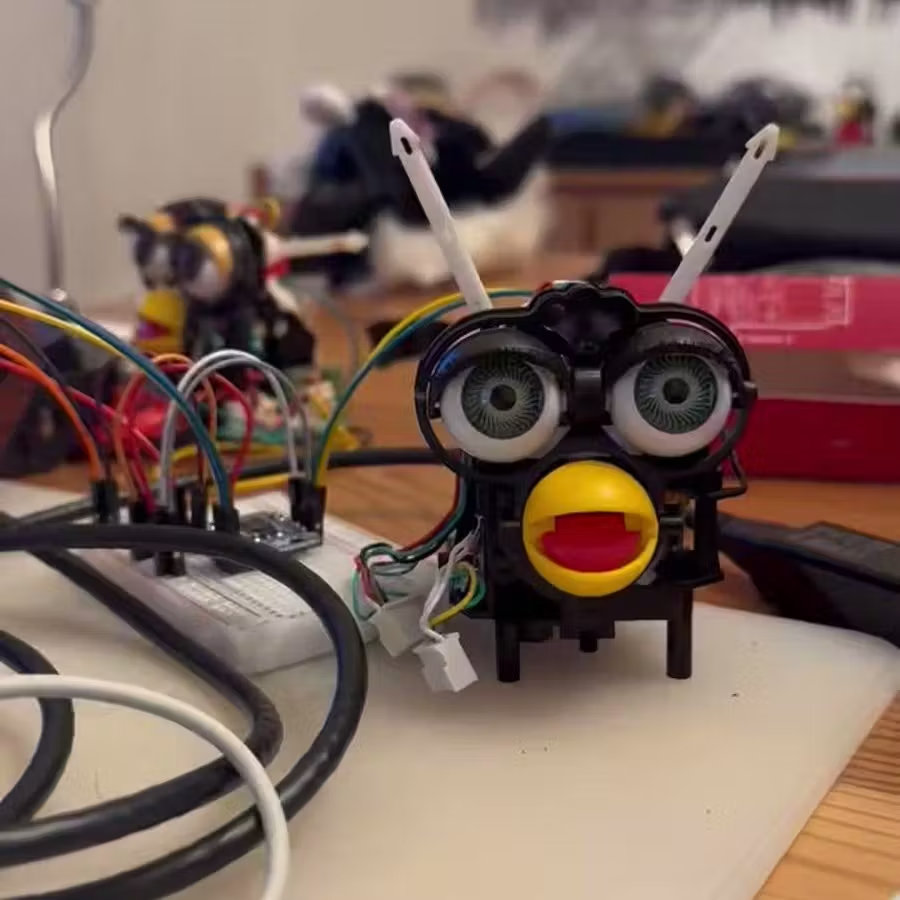In less than three years, ChatGPT has shifted from novelty chatbot to creative catalyst. But amid the practical use-cases (automation, writing help, tutoring) lies a curious undercurrent: really weird things built with it. In this article I explore five of the strangest implementations of ChatGPT, their design, ambition, lessons, and what they reveal about AI’s experimental frontier.
The “AI Furby” : ChatGPT meets childhood toy

One of the most surreal projects is the AI-enabled version of the 1998 toy Furby. Engineering student Jessica Card took a Furby, gutted it, connected speech-recognition via a Raspberry Pi to ChatGPT, and made the toy respond like a full conversational agent.
Why it’s weird
- A nostalgic toy transformed into a voice-driven AI agent.
- The Furby, in a demo, explains a “plan to take over the world” via ChatGPT responses.
- It blurs the line between playful tinkering and eerie “robot buddy” territory.
What we learn
- ChatGPT can drive physical objects (with voice in/out + controls).
- Novelty can spark engagement (viral video, media coverage).
- But there are unsettled ethics: inserting advanced AI into toys means new types of user-interaction risks (both benign and creepy).
ChatGPT in Game Engines & Robotic Bodies
Another trend: plugging ChatGPT into game engines or robots to create interactive agents rather than just text chat. According to one report: people have hooked up ChatGPT with Unity to build simple games; others connected it to robotics kits for movement, voice, and responses.

Why it’s weird
- ChatGPT is fundamentally a text model but it’s being used to control movement and visuals (game logic, robot behavior).
- Example: a Raspberry Pi + motor + ChatGPT-driven voice responses made a robot do push-ups and drive in a square.
- The acts are unexpected: you imagine ChatGPT generating prose, not integrated into physical toys or games.
What we learn
- Interfacing a large-language-model (LLM) with sensors/actuators magnifies weirdness (and potential).
- It signals a shift: chatbots → agents interacting with the physical or visual world.
- For entrepreneurs/devs: there’s value in “weird intersections” language models + robotics + games may spawn new niches.
ChatGPT Prompts for Art, Narrative & Fictional Worlds
Beyond hardware hacks, many weird uses ride purely on the creativity potential of ChatGPT. For instance: using it to outline a fictional town, draft branching game-narratives, or craft surreal “interview the universe” prompts.

Why it’s weird
- These uses stretch ChatGPT into ideation mode not just questions and answers.
- Example: Asking ChatGPT to design “fantastical ways of decorating a living room” and then plugging those into visual design.
- The outcome: weird stories, odd art concepts, borderline surreal. It’s art-by-AI-assisted.
What we learn
- ChatGPT isn’t just a “tool” but becomes a “creative partner”.
- Some of the best ideas come from asking weird questions.
- For businesses: the weirdest ideas might map to fresh angles (e.g., brand narrative, immersive marketing).
ChatGPT-Driven Content That Becomes “AI-Slop”
Finally: the weirdest things may not be devices or games, but content gone off-road. The term “AI slop” describes low‐quality or spammy AI-generated content.
Why it’s weird
- Users have created entire fake Wikipedia-style articles using ChatGPT, some describing non-existent historical places.
- The output is coherent, but factually wrong “flashy but strange”.
- This demonstrates weirdness in a different dimension: content quality and integrity.
What we learn
- When you unleash ChatGPT broadly, you risk low-quality outputs if oversight is lax.
- For enterprises: weird content can damage brand tone or credibility.
- The weirdest use may be simply abusing an AI to churn out quantity over quality.
Conclusion: Embrace the Weird, but Keep Strategy & Ethics
The five examples above show that “weird things built with ChatGPT” span hardware hacks, creative experiments, viral memes, and content overload. Each one delivers a lesson:
- Innovation often lives at the edge: pairing ChatGPT with toys or robots opened ideas no one anticipated.
- The weird can be strategic: creative, surprising uses can spark attention, differentiate a brand, or open new capability spaces.
- Ethics, quality, meaning matter: a weird experiment for fun is one thing; doing it at scale without oversight invites risk.
- Ask better questions: the weirdness often stems from “what if we tried X?” rather than “how do I do Y?”
- Monitor weird trends: viral prompts, new combinations (LLM + robotics + games) may point to future commercial pathways.
Forward outlook: As ChatGPT and its successors gain multimodal power (images, voice, video, robotics linkage) we’ll see even weirder builds. The frontier moves fast entrepreneurs who experiment now may capture the next wave of transformative use cases hidden beneath the weird.






